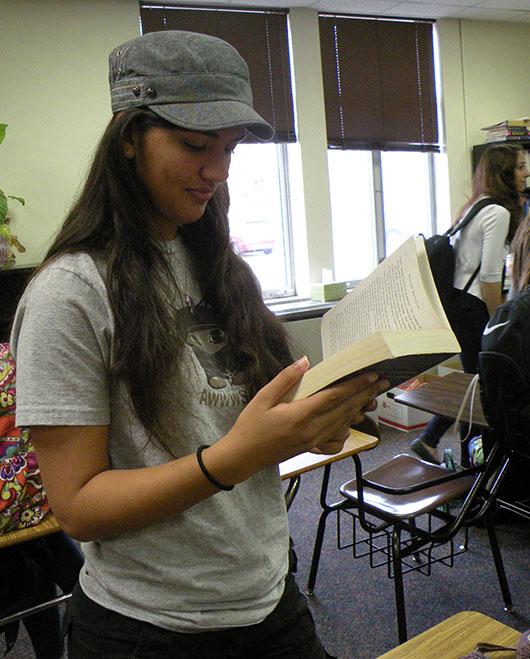Walking into the school after braving the cold winds, I am told to take off my hat almost immediately. I have not been in the building for a minute and already my mood has been worsened by a rule that is slowly becoming outdated.
Other students have had similar encounters. “(Jan) Bjurstrom (former campus monitor) confiscated my hat in the lunchroom, and I had to go to the office to pick it up,” sophomore Alec Morris said. “I had to wait five to eight minutes in the office for her to come in, grab my hat, then explain to me that if I keep getting caught wearing a hat, it would eventually lead to office referrals and the principal getting involved.”
The school district first put the no hats rule in place sometime before the early 90’s when there were gang issues in the area and within the school according to Associate Principal Jerry Stratton. This reason is no longer relevant. This could have been true for when it was put in place but now a days hats are just a way to keep people’s heads warm or a way for students to hide the fact that they are having a particularly bad hair day or even a way for students to make themselves stand out from the crowd.
When I first heard of this rule I was at Summit and given the excuse that hats can be distracting, or at least that’s what I assumed after one of the hat days, and that was why the school district put the rule in place. This is not true when it comes to beanies and snapbacks as they just sit on the student’s head and nothing else. Beanies and snapbacks don’t light up or draw attention other than a quick “hey, I like your hat”.
The reason I heard next for why hats were not allowed was that they can conceal weapons or other harmful things. I was given this reason by another student and whether they were joking around or not is unclear as it was quite a while ago. However this is still hard to believe as anyone who has worn a beanie before knows that they cannot hold anything remotely heavy otherwise they fall off and snapbacks do not offer any room for extra objects other than the head.
The two reasons that are harder to oppose though are that the rule is still around because taking off a hat when indoors is respectful and that hats and hoods can make it harder to identify someone using the security cameras. While these are valid points a few loop holes exist within them.
Administration sees it as respectful to take off hat indoors, but my generation sees wearing a hat indoors as casual expression. “They could discriminate against us, it’s a generation thing against us,” senior Bethlynn Christensen said. “We’re so defiant and we’re gonna wear hats when we’re not supposed to.” Even though my generation might not see it as disrespectful the older generation in this building do and thus the rule is still in place.
“When you have [hats or hoods] pulled up it’s hard to identify people, not impossible, but it’s more difficult,” Stratton said. While hoods and snapbacks, worn with the bill in the front, might obscure security camera views of a student’s face, why do they have to outlaw all hats.
The best solution to making sure a student does not obscure the camera’s view with a hat would be to have rules about how the hat is worn, tell students that they can wear hats but if the hat has a bill on it, the bill should not be covering their face. I do not understand how beanies could obstruct the view because they literally just sit on the top and back of your head.
The professional world may not be hat friendly and the school might be trying to prepare us for that but what the school needs to think about is that as high schoolers most of us have jobs. Our employers will tell us if hats are okay or not and as young adults we will know where we are and how we should act and dress in order to succeed.
The administrators may find the rule necessary to keep in place but even so it should be reviewed and changed to better fit the student population at large. Times change and one thing that has changed is the view on hats and what they stand for.








